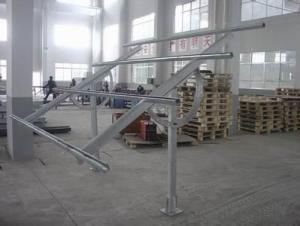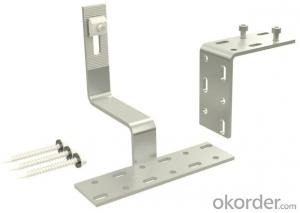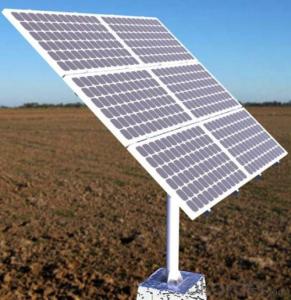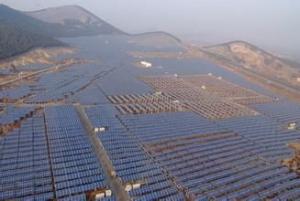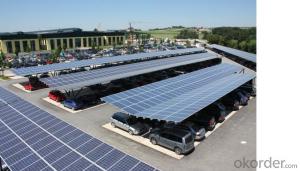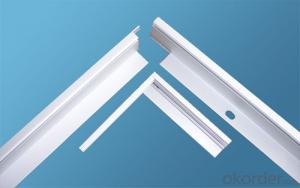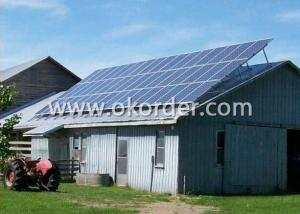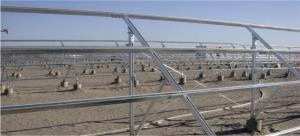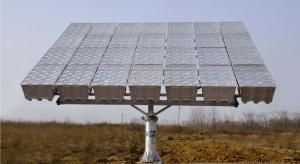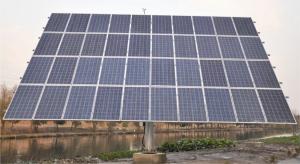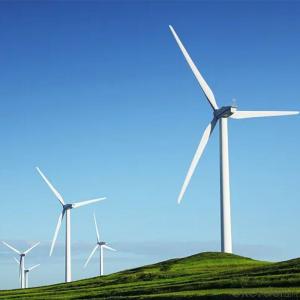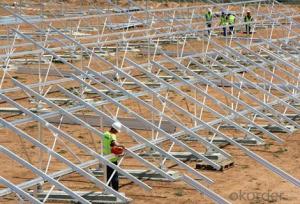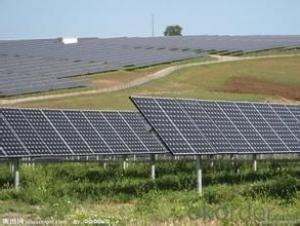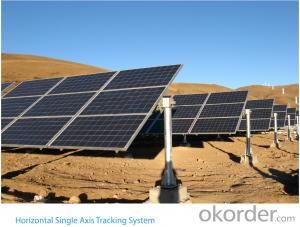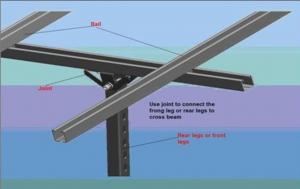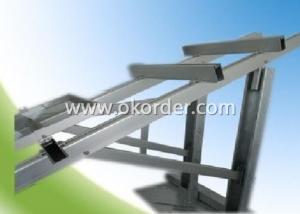Solar Panel Monting System TT-DR-SP2
- Loading Port:
- Shanghai
- Payment Terms:
- TT OR LC
- Min Order Qty:
- -
- Supply Capability:
- 50万套 set/month
OKorder Service Pledge
OKorder Financial Service
You Might Also Like
PV Mounting brackets are special solar photovoltaic systemfor placing, installing, fixing the solar panel design. Generally materials arealuminum, steel structure, stainless steel. PV mounting products at groundmounting system, flat roof mounting system, adjustable angle roof rack system,inclined roof rack system, column bracket system.
The Ground Mounting System including concret basement sysytemand steel pipe sysytem, Titanergy provides total solution for flat or pitchedroof with patent products.On the basis of the given project data, specificnational standards and guidelines, Titanergy will calculate the completestructural analysis and create a complete project plan to make sure reliablestructural safety.We provide high quality HDG steel and aluminum products forthe ground mounting sysytem,witch can make sure the security and durability ofthe project.
Features and Advantages
n The rail bracket is easy to install, just use simple tools(eg, Allen wrench) can be easily installed. Rail connecting member can freelyadjust the length, the stent may be pre-installed on the roof, and thenappropriately adjusted according to the size of the solar panel.
n The combination of strong, aluminum rails and card blocks fora variety of venues and a variety of materials roofs (such as metal, ceramicand other kinds of tile surface)
n Component compatibility, and rail can meet PV modules fromdifferent manufacturers.
n accuracy, the length of the rail to the nearest millimeter,the construction process, not because of the length is too long or too shortfor the second cut.
n flexible assembly, rail hooks can adjust the spacing modulearray and tile has been installed successfully address the uneven roofconstruction led to difficult problems.
n design standards, product design and development process instrict accordance with GB, the German standards and other internationalstandards to ensure products reach the world advanced level.
n Quality assurance, the stent main material is high-qualityaluminum and stainless steel, effectively prevent corrosion of oxidation.Products can be recycled, reducing environmental pollution.
n Carried out strictly according to the current specificnational standards
n Perfectly optimized components and complete structuralanalysis for the sysytem
n High corrosion resisitance ensure the stability and highdurability
n Total test and certification make sure the high quality ofthe products
n Maximum pre-assembled in factory,quick mounting onsite,timesaving
10-year durability warranty
Technical Data
n Design Period:25 years
n Installation Site: Open area
n Array Angle:10°~60°
n ModuleType:Framed or unframed
n Material:Q235B,Al 6063-T5,Al 6005-T5,StainlessSteel A2-70
n Coating:HDG/Anodised
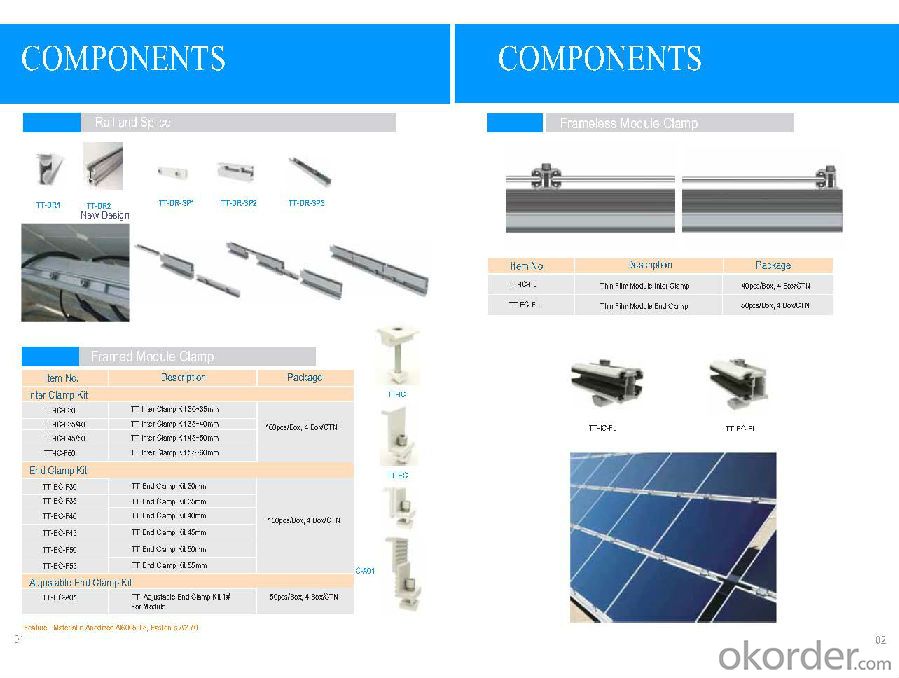

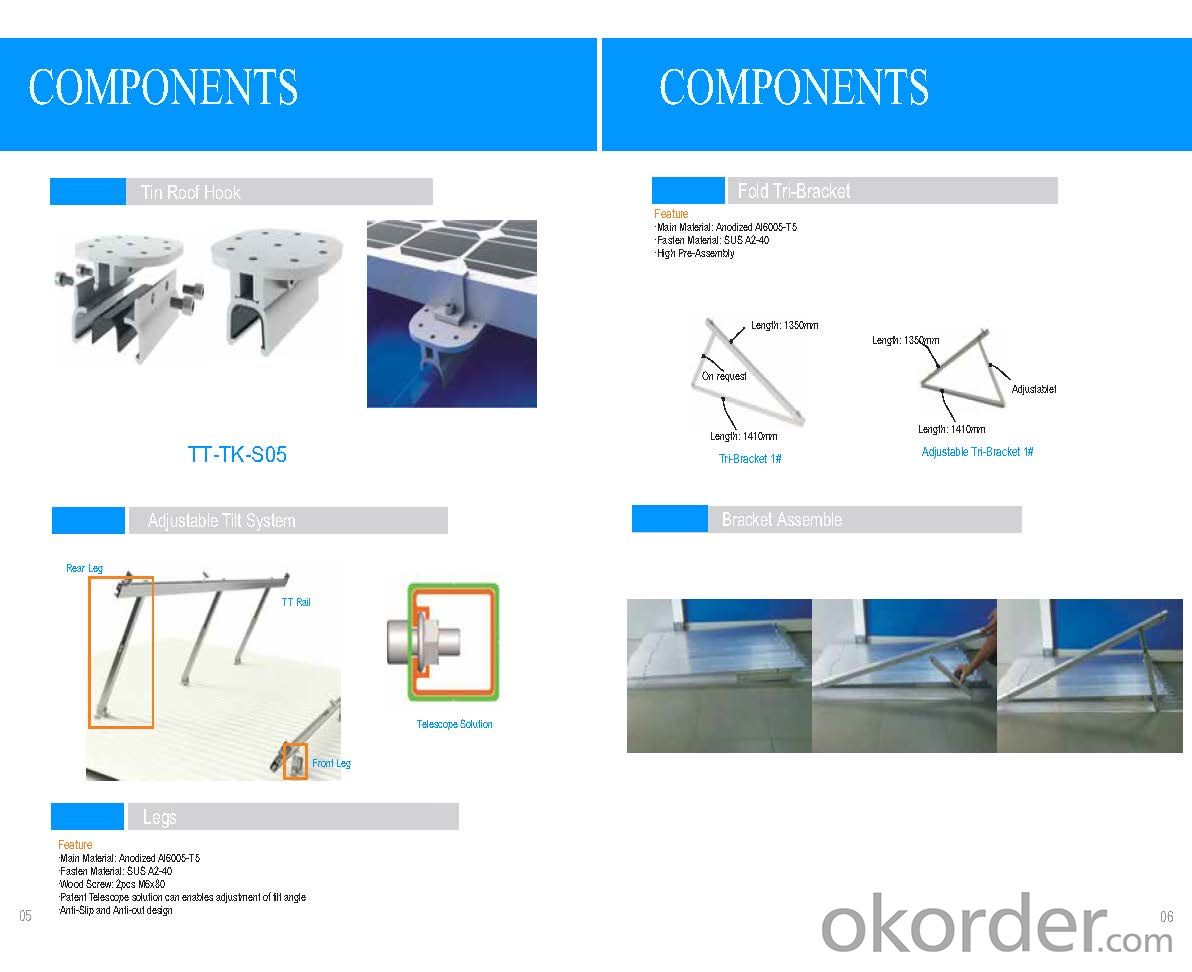
- Q:Can a solar mounting system be installed on a retail or shopping center?
- Yes, a solar mounting system can be installed on a retail or shopping center. These systems are commonly used on commercial buildings, including retail centers, to generate renewable energy and reduce electricity costs. The large flat rooftops of shopping centers provide ample space for solar panels, making it an ideal location for installation.
- Q:How does a solar mounting system affect the roof's fire resistance?
- A solar mounting system typically does not directly affect a roof's fire resistance. However, proper installation of the system is crucial to ensure that it does not compromise the fire-resistant properties of the roof. This includes following necessary fire codes and using fire-resistant materials.
- Q:Can solar mounting systems be installed on mountains?
- Yes, solar mounting systems can be installed on mountains. However, the installation process may be more challenging and require additional engineering and technical expertise due to the steep and uneven terrain.
- Q:Can a solar mounting system be used in areas with government subsidies?
- Yes, a solar mounting system can be used in areas with government subsidies. In fact, government subsidies often encourage the adoption of renewable energy systems, including solar power. These subsidies can provide financial incentives, tax benefits, or grants that help offset the initial installation and equipment costs of a solar mounting system. Therefore, utilizing a solar mounting system in areas with government subsidies can be a wise decision to maximize the benefits and cost-effectiveness of solar energy installations.
- Q:How are solar mounting systems installed on the ground?
- Solar mounting systems are typically installed on the ground using a few simple steps. First, the area where the system will be installed is cleared of any obstructions and leveled. Next, a foundation is created by digging holes in the ground and filling them with concrete. Metal posts or anchors are then secured in the concrete, providing a stable base for the mounting system. Rails or frames are then attached to the posts, and solar panels are subsequently mounted onto these frames. Finally, the entire system is secured and adjusted for optimal positioning and angle to maximize sunlight exposure.
- Q:Can a solar mounting system be installed on a rooftop with a rubber roof?
- Yes, a solar mounting system can be installed on a rooftop with a rubber roof. Rubber roofs are suitable for solar installations as long as proper precautions are taken during the installation process to ensure the roof remains watertight. The mounting system should be designed specifically for rubber roofs and should include appropriate flashing and waterproofing materials to prevent any leaks or damage to the roof. It is recommended to consult with a professional solar installer to ensure proper installation and compatibility with a rubber roof.
- Q:What is the expected lifespan of the fasteners used in a solar mounting system?
- The expected lifespan of fasteners used in a solar mounting system can vary depending on several factors such as the quality of the fasteners, the environment in which the system is installed, and the regular maintenance and inspection practices. However, high-quality stainless steel fasteners are commonly used in solar mounting systems, and they are designed to withstand harsh environmental conditions, including exposure to sunlight, moisture, and temperature fluctuations. With proper installation and maintenance, it is generally expected that these fasteners can last for the lifetime of the solar system, which is typically around 25 to 30 years.
- Q:Are there any specific requirements for facade or cladding design when using a solar mounting system?
- Yes, there are specific requirements for facade or cladding design when using a solar mounting system. The design should consider the weight and load-bearing capacity of the facade or cladding to ensure it can support the added weight of the solar panels and mounting system. Additionally, the design should allow for proper ventilation and air circulation to prevent overheating of the solar panels. It is also important to consider the aesthetic integration of the solar panels with the facade or cladding to maintain the overall visual appeal of the building.
- Q:Can solar mounting systems be installed on rooftops with wind turbines?
- Yes, solar mounting systems can be installed on rooftops with wind turbines. However, proper planning and design are necessary to ensure that both systems can coexist without any interference or shading issues.
- Q:What is the typical warranty for a solar mounting system?
- The typical warranty for a solar mounting system can vary depending on the manufacturer and the specific product. However, most reputable companies offer warranties ranging from 10 to 25 years for their solar mounting systems.
1. Manufacturer Overview |
|
|---|---|
| Location | |
| Year Established | |
| Annual Output Value | |
| Main Markets | |
| Company Certifications | |
2. Manufacturer Certificates |
|
|---|---|
| a) Certification Name | |
| Range | |
| Reference | |
| Validity Period | |
3. Manufacturer Capability |
|
|---|---|
| a)Trade Capacity | |
| Nearest Port | |
| Export Percentage | |
| No.of Employees in Trade Department | |
| Language Spoken: | |
| b)Factory Information | |
| Factory Size: | |
| No. of Production Lines | |
| Contract Manufacturing | |
| Product Price Range | |
Send your message to us
Solar Panel Monting System TT-DR-SP2
- Loading Port:
- Shanghai
- Payment Terms:
- TT OR LC
- Min Order Qty:
- -
- Supply Capability:
- 50万套 set/month
OKorder Service Pledge
OKorder Financial Service
Similar products
New products
Hot products
Hot Searches
Related keywords
